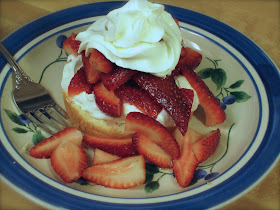April 14, 2013
Menu
Ham
Roasted Butternut Squash with Yogurt and Sesame Seeds
Baked Potatoes
Challah
2011 Forest Ville Gewürtzraminer
Recipe
Challah from Cook's Illustrated
The choice for the entreé was between roast ham and turkey and I ended up selecting ham, which we hadn’t had in a while. Since the oven would be on to cook both the squash and the ham I thought baked potatoes would be good, too. I hadn’t made bread in a while so I also decided to try my hand at challah which I had never made before.
Needing to have three items in the oven at the same time led to come compromises in temperature and timing. (The bread was baked before the other dishes were started.) I set the temperature at 400°; this is the temperature specified in the squash recipe I was testing, and higher than the recommended temperature for heating the ham and baking the potatoes. When the squash was done the ham was still cool in the center (I had this same experience the last time I fixed ham) and the potatoes were not quite done. We ate the warm ham and finished the potatoes in the microwave.
The baked squash was good to eat and easy to fix: it is peeled, the seeds are removed, and the squash is halved lengthwise before being cut into ½-inch thick slices. These are tossed with melted butter and put on a baking sheet and roasted, being turned once about half way through. The garnish really set off the earthy flavor of the squash. It was with Greek yogurt, extra-virgin olive oil, sesame seeds, and coriander.
We also enjoyed the challah. The braided loaf was beautiful to look at, fun to make, and good to eat. Like brioche it is an enriched bread with egg and butter added to the dough. The tender, rich-tasting bread went well with the ham and squash.
This was more of Fall/Winter meal than a Spring/Summer dinner. However, it was a chilly, windy Spring day as we ate our dinner outdoors. In retrospect it was probably too cold outside for dining and we would have enjoyed the meal more inside where the food would have stayed hot longer. So the menu was not as out of step with the season as it would seem. I was able to provide feedback on the new squash recipe and we have leftover ham and squash to look forward to.
Leftovers
The challah makes very good toast and was enjoyed with butter and cinnamon sugar for breakfast.
The squash was served, with the garnish, at two additional meals, reheated in the microwave, and this worked out well.
Ham is a wonderful leftover, just as good reheated or cold as when it was first served, and very versatile. We had breakfast for dinner one night: pan-fried ham slices with challah French toast. We also had reheated ham, scalloped potatoes with ham, and ham and cheese sandwiches for lunch. Finally we had a delicious Grilled Cheese with Roasted Pineapple, Ham, and Swiss. Sandwiches are beautiful.





















